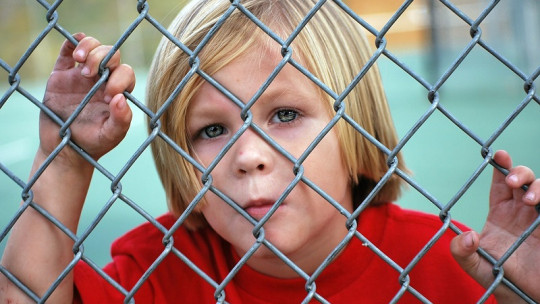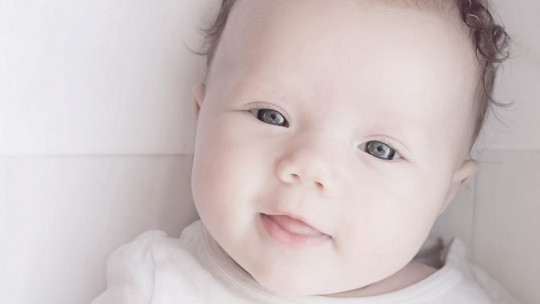
He Pygmalion Effect is the phenomenon by which the expectations and beliefs of adults towards their children tend to be confirmed with the passage of time.
The Pygmalion Effect in children
It receives that name in reference to Pygmalion, an ancient king of Cyprus, who fell in love with a female statue that he had created and implored Aphrodite to give life to the statue. Finally Aphrodite agreed to Pygmalion’s claims, materializing your desire Pygmalion married Galatea, the name of the woman born from that original statue, and had a daughter named Pafo.
Metaphorically, the Pygmalion Effect describes how parents, teachers, and people with emotional ties can transfer or influence a child’s lifestyle, mutating their abilities, tastes and behaviors. These types of expectations placed on the child are transmitted through verbal and non-verbal language, and express both what we long for and what we reject.
Language can transmit insecurity to the child
A good amount of the messages we transmit are surreptitious, and They operate both in the gestural field and in the connotation of what we express Therefore, they differ from the verbal message that is transmitted, and the child is able to capture that underlying feeling beyond the strictly verbal message. Without going any further, many messages sent to children can be of the type: “Behave like a man”, “Be smarter”, “You can’t do this”.
However, what is conveyed is the longing or fear expressed in the imperative form of the language; the child learns what his role or behavior should be (and more importantly: how it should not be). Thus, the true message that the child receives reads: “You are not man enough, prove it”, “You are stupid”, “You are going to fail”. Therefore, it is crucial to try to describe more precisely what we feel, and to try to make sure of our own feelings before expressing them.
In short, families usually deposit a series of unconscious beliefs (good or bad, constructive or limiting) regarding the future of each of its offspring. The tangible product of this aggregate of beliefs and desires is what is known as the Pygmalion Effect.
Research on the Pygmalion Effect
One of the studies on which the theory of the Pygmalion Effect is based was carried out in the United States. We worked with two groups of students, one of which was made up of students with superior intelligence and good academic qualifications, while the other was made up of students with grades below average During the experiment, the teacher did not know the true origin of the students or the criteria with which the students had been separated into two groups.
Instead, The teacher was given inverted information about the intellectual and academic development of the students
The teachers were informed that the first group (which was made up of the diligent students) was made up of the worst students in the state. As for the second group (the one made up of mediocre students), the teachers were told that it was made up of students with a higher intellectual level, and that they obtained excellent grades.
After some time teaching, It was reported that the group of intellectually bright kids suffered a noticeable drop in grades, while those who had a poor academic level significantly increased the quality of their grades. Therefore, the conclusion is clear: the teacher’s belief influenced his interaction and the students’ achievement of academic objectives. Thus, the belief in the students’ ability led to a kind of “self-fulfilling prophecy.”
Sometimes adults are aware of these expectations and desires placed on children, for example they may be aware that they have had a child so as not to feel alone during old age, to be able to solidify marital ties, to give meaning to life, to replace someone who died, to inherit a business, etc. Whether or not they are more aware of these reasons, the truth is that they develop a whole set of strategies aimed at maximizing the chances that these desires will be fulfilled, from the name they give to the baby, to the most unusual fantasies about their dreams. abilities, his physique or his future vocation.
Belief as a protective element
Beliefs are so powerful that they can reverse the future of a person, who for example has a tendency towards a complicated and surly character, simply due to the influence of the reiteration of unconscious messages that they have heard and internalized during their childhood. and that sets the path for how your story should end or, in this case, a specific personality trait. In this way, personalities and biographies have been forged that, far from the essentialist mechanism, They have been consolidating their way of being and their goals hand in hand with beliefs poured out on them
In this sense, it is important to point out that this influence of the family environment is capable of protecting the infant in vulnerable social contexts, since from this vision, trust manages to protect the child in a network of optimism about their abilities and their future, acting as a vaccine. of the virus of misfortune.
These good intentions born of love certainly have the ability to build realities, as reflected in the unforgettable film “Life is Beautiful”of Roberto Benigni In the film we learned how is it possible to found an alternative reality when the father modulated his son’s vision of events, transforming the terrible experience of living through the war and the concentration camps of the Third Reich into an event full of challenges, challenges and games, with characters who played the role of villains, contributing decisively to saving carnal life, but above all their desire to live and to be able to face barbarism with integrity.








